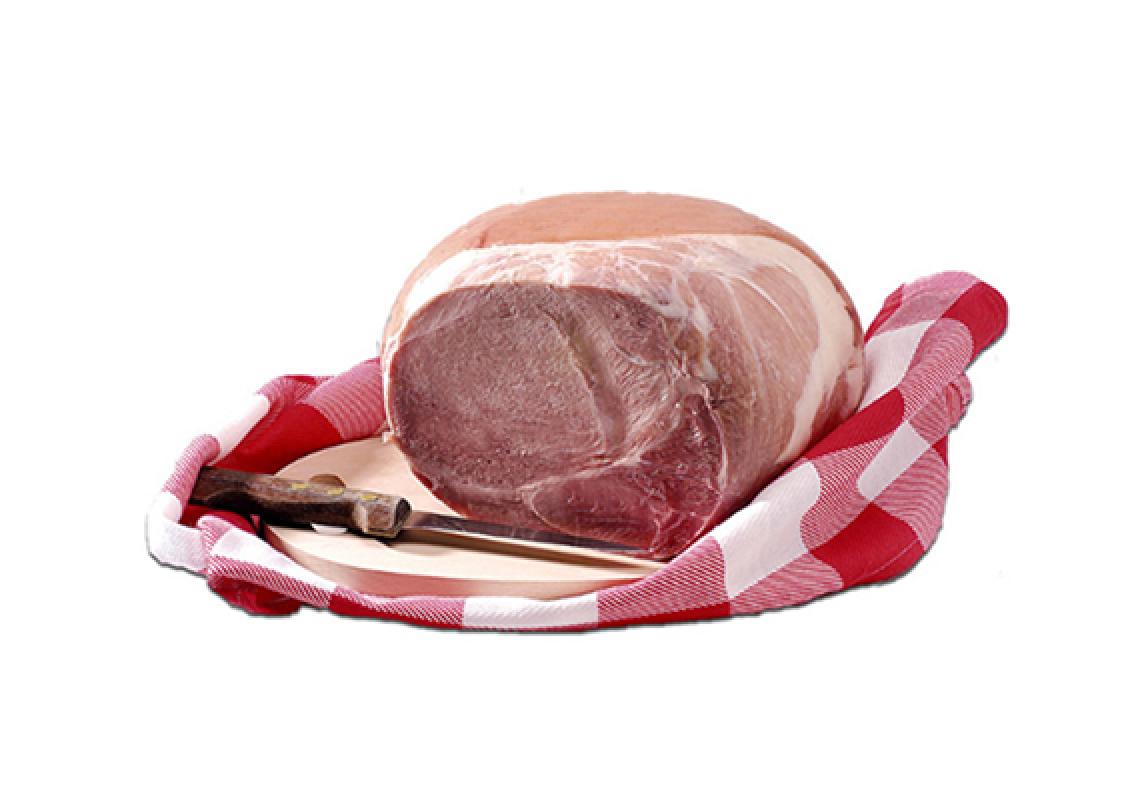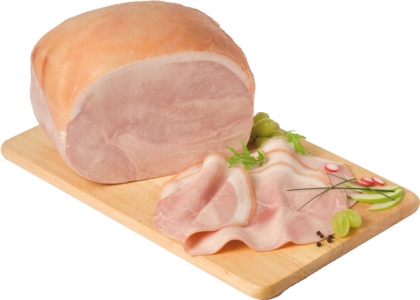If you love savory, salty cured meats, you may have come across torchon ham on charcuterie boards or deli menus But what exactly is torchon ham, and how does it differ from other cured hams? Here’s a complete guide to understanding this unique type of ham
What is Torchon Ham?
Torchon ham is a specialty cured ham originally from the Gascony region of France It gets its name from the French word “torchon” meaning towel or cloth
Unlike many hams that are dry-cured and smoked, torchon ham is brined and then poached in stock. The ham is wrapped in cheesecloth during poaching, which is how it gets its characteristic name.
The Origins and History of Torchon Ham
Torchon ham has its roots in the Gascony area of Southwestern France, which is known for its rich food traditions like duck confit, cassoulet beans, and indulgent preserved meats.
The torchon method of poaching and wrapping the ham in cloth dates back centuries as a way to preserve and intensify the flavor of the meat. It was often made by peasant farmers as a way to make the less prized parts of the pig more delicious and extend the use of the animal.
Over time, torchon ham evolved into a specialty delicacy made by professional charcutiers and served for special occasions. Today it’s considered one of many prized regional French hams.
How is Torchon Ham Made?
Authentic torchon ham is made using a careful multi-step process:
-
The fresh pork leg is trimmed of skin, bones, and excess fat.
-
The meat is rubbed with a dry curing mix of salt, spices, and nitrites.
-
It cures for 1-2 weeks to absorb flavor and preserve the meat.
-
The cured ham is rolled and tied up in cheesecloth.
-
It simmers gently in stock, wine, and aromatics for 6-12 hours until tender.
-
After cooking, it’s unwrapped, cooled, and allowed to rest to meld the flavors.
-
Finally, it’s sliced and served or packaged for sale.
This poaching technique gives torchon ham a soft, velvety texture and infuses it with lots of flavor from the cooking liquid.
What Does Torchon Ham Taste Like?
Thanks to its unique cloth-wrapped poaching method, torchon ham is extremely tender and succulent. It has a delicate, melt-in-your-mouth texture.
The flavor is refined, subtle and mildly smoky. Unlike dry cured ham, it doesn’t have an overly salty or aggressive taste. The spices come through but take a backseat to the fresh, porky flavor.
Think of torchon ham as a silky, elegant version of ham rather than the more rustic, intensely smoked hams from Spain or America. It’s prized for its velvety texture and refined, delicate taste.
How is Torchon Ham Served?
Part of torchon ham’s appeal is that it can be enjoyed in many ways:
-
Thinly sliced on charcuterie boards or cheese platters
-
Diced or sliced in salads, quiches, or omelets
-
Wrapped around melon, peaches, or grilled asparagus
-
Layered in sandwiches, paninis, and croque monsieurs
-
Pureed into a smooth pâté to spread on crackers or baguette
-
Added to chic hors d’oeuvres like canapés or crostini
Its versatile texture works for everything from elegant appetizers to down-home sandwiches. Torchon ham pairs wonderfully with fruit, cheese, wine, mustard, or sweet jams.
Where to Buy Torchon Ham
Genuine torchon ham imported from France can be found at gourmet stores or online:
-
Specialty grocers like Whole Foods, Dean & DeLuca
-
Delicatessens and charcuteries that sell imported cured meats
-
Online gourmet food retailers may carry it
Domestic torchon-style hams mimic the French technique but are not true torchon. Check labels to confirm imported French origin for authentic flavor.
Is Torchon Ham Expensive?
Yes, torchon ham tends to cost more than regular sliced ham or other cured pork products. Expect to pay $15-30 per pound for the real French deal.
This specialty ham is labor-intensive to produce and imported in small quantities, so the price reflects that. Many gourmets consider it well worth the cost for rare occasions.
Torchon Ham Recipes
Here are some tasty ways to enjoy velvety torchon ham:
-
Wrapped around fresh figs or melon slices for an elegant starter
-
In a quiche Lorraine with egg, cream, and Swiss cheese
-
On croissants or baguette with Dijon mustard and Gruyère
-
Thinly sliced on a charcuterie board with olives, nuts, and pickles
-
diced Into a spinach salad with hard boiled egg and mushroom
-
In a pressed panini with Brie, apple, and arugula
-
Pureed with cream cheese as a dip for crackers or vegetables
With its refined flavor and smooth texture, torchon ham brings elegance and luxury to both simple and gourmet dishes. It’s perfect for accenting salads, sandwiches, cheeseboards and hors d’oeuvre.
So next time you see torchon ham at your local deli or charcuterie shop, consider treating yourself to a taste of this melt-in-your-mouth specialty ham.

HISTORYof Cooked ham
There is no record of the Suidae family of pigs living on Earth in the first tertiary period, about 50 million years before our time. No one will remember them. Still, we owe this first breed a lot of thanks because the domestic pig, which is a distant relative of the wild boar, would not have made such a big difference in French cuisine without them. And according to history, that would be Gaul gastronomy before being adopted by the French.
Did you know that our ancestors, the Gauls, were the first people to make ham? They brought it to the world and made it so popular that many people now make it the same way, so its fame is rarely linked to its French roots. Germanic people, Romans, and Iberians all took the idea and made it fit their own region because they were so good at smoking, curing, and preserving pig meat in oil so that it wouldn’t go bad. ”].
The ‘noble’, premium parts of the pig have always played an important role. After 300 years, the Pax Romana (Roman peace treaty) encouraged Latin charcutiers and Gaul breeders to share their knowledge and skills. During the Middle Ages, ham came to represent wealth and plenty, and it was eaten all over Europe as a staple of rural diets. More than one mural or stained-glass piece in famous places like Notre Dame Cathedral in Paris, the Basilica of Saint-Denis in Paris, and the Parma Baptistery in Italy show Ham.
Mentions of cooked ham in various written works gradually multiplied. For example, a recipe for cooked ham was written down in a home economics treaty in the 1400s. In 1793, four hundred years later, the Tableau du Maximum, an official document that set the highest price for food, made it clear that cooked ham was sold in and around Paris. In 1869, famous French chef and pastry-chef Jules Goueffé also described ‘Paris ham’ (French: jambon de Paris). An important source said that this was an “ordinary ham” that had been cured, boiled, deboned, put in a terrine “rind-side down,” and chilled under a press. He recommended this should be served with a jelly or on a serviette garnished with sprigs of parsley.
Ham is described in myriad ways. The jambon de Paris that some people get is boned, rolled, and covered in a thick layer of fat and rind. It doesn’t have any jelly on it. Equally it can be perfectly cylindrical in shape, boned and retaining the rind. In fact, jambon de Paris did describe cooked ham, which was a popular food at the time.
SECRETS OF PRODUCTIONof Cooked ham
Cooked ham today accounts for France’s largest charcuterie production.
There are strict rules about production, and the industry code of best practice (French: Code des Usages) says that only ham from the back of the pig can be used to make cooked ham.
Cooked ham or jambon blanc (white ham), is simply put, salted ham. The salty character comes from soaking in brine. How the ham is cooked is also important. It can be steamed, braised, cooked “au torchon” (wrapped in cloth and cooked on or off the bone), or in a broth. And so ham comes in multiple forms, from Paris, York, Prague and on the bone. It can also be categorised according to the way it is prepared.

Depending on the recipe and the type of additives (again, which are strictly regulated), cooked ham may also have wine, liquor, liqueurs, sugars, condiments, herbs and spices, and so on. The ham can be bought with or without the rind, and the fat layer on the outside should not be more than 4 mm thick. Fresh ham is the main ingredient. In France, it is often called “4D,” which stands for “découenné, dégraissé, désossé, dénervé,” which translate to “to remove the rind, fat, bone, and nerves.”
Today, salting and cooking techniques have evolved markedly to guarantee ham of consistently high quality standards.
The Code des Usages de la Charcuterie is a technical code of practice that tells people how to make charcuterie. It lists the main qualities that the meat must have in order to be sold as charcuterie. The charter was made after a lot of discussion and input from top and small producers, as well as the Technical Center for Salaison, Charcuterie, and Deli Meats (French: Centre Technique de la Salaison, de la Charcuterie, des Conserves de Viande). This is approved by the French Government through the DGCCRF (Directorate General for Competition Policy, Consumer Affairs, and Fraud Control). This way, the code of practice guarantees consumer safety and ensures products are not mis-sold.
How Ham Is Made from a Whole Pig — Prime Time
FAQ
Is Torchon ham processed?
What are the ingredients in Torchon ham?
What is torchon ham in the UK?
|
Ingredients
|
Pork (97%), Salt, Pork Broth (Water, Pork Fat, Pork Rind, Flavouring), Flavourings, Dextrose, Antioxidant: Sodium Erythorbate; Preservative: Sodium Nitrite.
|
|
Country of origin
|
France
|
|
Brand name
|
The Deli
|
|
Legal name
|
Torchon Ham Formed From Selected Cuts Of Pork Leg, Cured And Cooked
|
How many calories are in Aldi Torchon ham?
What is a torchon Ham?
Torchon in French means ‘cloth’. This ham is wrapped whilst it cooks, to give it a succulent delicious French flavour. Try in a croque monsiuer Allergy advice: for allergens see ingredients in bold For extra freshness place in a container or a food bag and ensure it is well sealed
What is a torchon in cooking?
Au Torchon is a French phrase used to describe a cooking technique. A “torchon” is a cloth, such as a dish towel, that a food is wrapped in for cooking. A cheesecloth can be used, or a pudding cloth (which has a tighter weave), or a clean kitchen towel. You wrap the food item in the cloth, and tie it securely with kitchen string.
Can I reproduce a French Torchon Ham?
It may not be reproduced in any way whatsoever without the prior consent of Waitrose Limited nor without due acknowledgement. Buy Unearthed French Torchon Ham online from Waitrose today. Picked, packed and delivered by hand in convenient 1-hour slots
What is a jambon de Paris Ham?
Jambon de Paris, also known as Paris-style ham, is a slow-cooked, unsmoked ham traditionally prepared by artisanal butcher shops in Paris—the capital city of France—and its outskirts. Translated literally from French, Jambon de Paris means “Paris ham” or “the ham of Paris.” It’s pronounced jan·bon du pa·ree.
